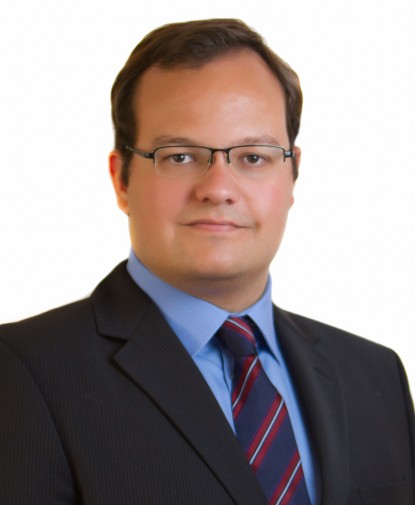Dr.-Ing. Niels Göran Blume
Arbeitsgebiet(e)
High Temperature Process Diagnostics, Reaktive Strömungen und Messtechnik
Kontakt
Method and Theory:
To fulfill this need for high precision concentration and temperature measurements of species in combustion environments it is necessary to develop novel approaches to obtain these fluid properties. Several very promising approaches utilize super continuum laser light sources (SC). In principle a super continuum laser light source (SC) uses a very short, but powerful laser pulse at a specific wavelength and directs this light pulse into a highly non-linear fiber (i.e. PCF = photonic crystal fiber). During the propagation of the light pulse through the non-linear fiber a combination of effects broadens the spectrum of the pulse in the frequency domain. Current setups allow the broadening of a pulse at 1064 nm to a continuous spectrum from 400 nm to 2400 nm. When leaving the PCF, the pulses of a SC are still temporally short (in the order of tens of ps), but contain a very broad spectrum. Furthermore these systems still behave like classical lasers in regards to intensity and coherence of the emitted light. In addition these laser light sources provide repetition rates for individual pulses of up to 80 MHz.
Such broadband laser light sources allow for multi-species detection in various environments at very high temporal resolutions, since with each individual pulse, a complete spectrum can be sampled and evaluated to determine all required parameters, i.e. species concentrations and temperature.
Publications:
Blume, N. G., Ebert, V., Dreizler, A. and Wagner, S., Broadband fitting approach for the application of supercontinuum broadband laser absorption spectroscopy to combustion environments, Measurement Science and Technology, 27 (2016) 15501-15514
Blume, N.G. and Wagner, S. Broadband supercontinuum laser absorption spectrometer for multiparameter gas phase combustion diagnostics, Optics Letters, 40 (2015) 3141-3144
Blume, N. G. and Wagner, S. Novel time-of-flight fiber dispersion measurement technique using supercontinuum light sources and acousto-optical tunable filters, Applied Optics, 54 (2015) 6406-6409
Blume, N.G., Ebert, V., Dreizler, A. and Wagner, S. Supercontinuum Broadband Laser Absorption Spectroscopy for spatially resolved Methane Measurements in Combustion Environments, Proceedings of the European Combustion Meeting, Paper P3-17, March 30–April 2, 2015, Budapest, Hungary, ISBN 978-963-12-1257-0
Conferences:
Blume, N. G., Zumeri, B., Zerling, T., Modulare Prüfstandsautomatisierung und Messgeräte-Integration für kleine bis mittlere Prüfstände im Actor Framework als Berufseinstieg mittels Hands-On LabVIEW- Kursen an der Universität, Virtuelle Instrumente in der Praxis, October 26-28, 2016, München, Germany
Wagner, S., Blume, N. G., Kühnreich, B., How to brew the perfect cup of coffee with the myRIO, NI Week, August 2-6, 2015, Austin, TX, United States of America
Blume, N. G., Supercontinuum laser broadband absorption spectroscopy for combustion research: Measurements and evaluation of recorded spectra, Gordon Research Seminar, Laser Diagnostics in Combustion, August 8-9, 2015, Waterville Valley, NH, USA
Blume, N. G., Diemel, O., Kühnreich, B. and Wagner, S. How to brew the perfect cup of coffee with the myRIO – A lecture concept based on “Do engineering”, Virtuelle Instrumente in der Praxis, October 22-24, 2014, München, Germany
Blume, N. G., Ebert, V., Dreizler, A. and Wagner, S., Broadband Absorption Spectroscopy and its Application to Combustion Environments, The Second International Education Forum on Environment and Energy Science, December 13-17, 2013, Huntington Beach, CA, United States of America





